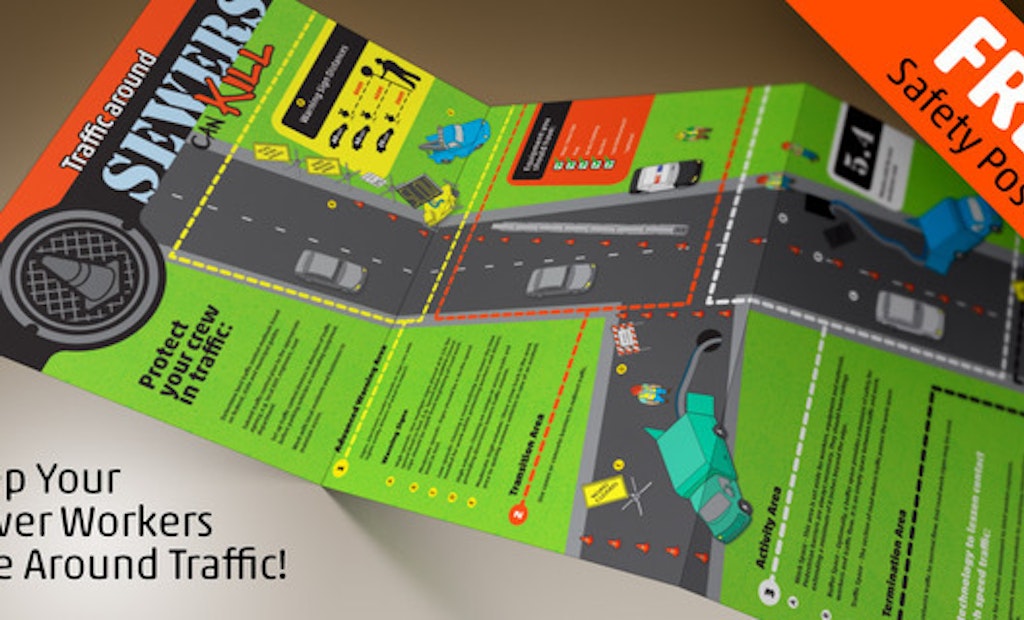Interested in Inspection?
Get Inspection articles, news and videos right in your inbox! Sign up now.
Inspection + Get AlertsSewer infrastructure typically runs under streets, so crews who clean, inspect and rehab sewers are routinely faced with traffic hazards as they do their work. The Federal Highway Administration reports that in 2015, a work zone crash occurred once every 5.4 minutes. Taking extra precautions to make these zones compliant with traffic safety regulations is the best way to minimize risk.
Most important is providing motorists with advance warning of the upcoming work. Alerting drivers to changes in the normal flow of traffic will allow them to better prepare for entering and passing through the work zone safely. Different speed zones require different signage to be effective.
In high and moderate speed zones, multiple signs should be placed so they are not overlooked. At 65 mph, a warning sign should be placed 800 feet from the beginning of the roadwork, with additional signage even farther from the zone. These signs can notify motorists not only of roadwork, but other specifics, like a reduction in speed or lane merge, that will affect them.
In low-speed areas, it may be more efficient to close off a road entirely because it can decrease work time, reduce the number of personnel required, and protect both sewer inspection workers and drivers.
While providing warning signs for drivers will lower the risk of accidents, there are many other details involved in maintaining a safe and compliant work zone. Envirosight is offering a free Traffic Safety poster that illustrates how zone setup looks depending on street size and traffic volume, so your crew can reference the necessary requirements for a safe work zone.






